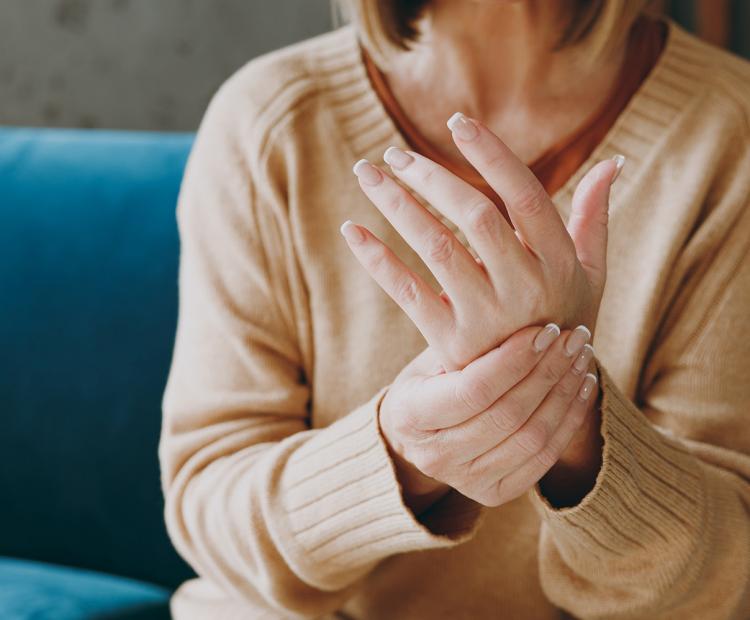Complex regional pain syndrome is a neurological condition that causes pain and other symptoms, such as weakness. It can occur anywhere in the body but typically develops in the arm, leg, or hand. This condition can significantly adversely impact physical and mental health and overall quality of life. Treatments are available that may ease symptoms and improve functioning.
The article below provides an overview of complex regional pain syndrome treatment, including medications, spinal stimulation, and lifestyle changes.
What is CRPS Disease?
Complex regional pain syndrome (CRPS) is an uncommon chronic pain condition typically affecting a leg or arm. CRPS can develop after different types of injury or trauma to the body, such as:
- Surgery
- Strains or sprains
- Fractures
- Burns
Complex regional pain is a relatively uncommon condition. According to the Cleveland Clinic, it affects approximately 200,000 people yearly in the United States1. Intensity and frequency of pain symptoms may vary and may affect many parts of the body.
Possible signs and symptoms of complex regional pain syndrome include:
- Continuous throbbing or burning pain, usually in the leg, arm, foot, or hand
- Sensitivity to cold
- Swelling in the painful area
- Changes in skin color ranging from blotchy red to white
- Changes in skin texture, including the area becoming shiny or thin
- Changes in skin temperature alternating between cold and sweaty
- Joint stiffness and damage
- Muscle spasms and possible weakness
- Decreased range of motion and ability to move the affected area

Can CRPS be Cured?
Currently, complex regional pain syndrome has no cure 2. However, treatment, especially when started early, can relieve symptoms. It is also possible that the nerve injury may resolve and symptoms decrease.
Treatment for CRPS
There are several ways to treat complex regional pain symptoms. The right treatment will help ease the pain and restore mobility and function, providing a higher quality of life. Finding the most effective treatment approach may require some trial and error. Additionally, combining multiple treatment options may offer the most benefit.

Possible treatments for complex regional pain include those listed below.
1) Complex Regional Pain Syndrome Medication
Managing pain from complex regional pain syndrome often involves medications. These can include pain relievers and anti-inflammatory drugs to reduce discomfort and control symptoms.
According to the National Institute of Neurological Disorders and Stroke,3, the US Food and Drug Administration has not approved any specific CRPS medications. However, the following medications may help reduce symptoms:
- Non-steroidal anti-inflammatory medications, such as naproxen and ibuprofen, may treat moderate pain and inflammation.
- Acetaminophen may help control pain associated with joint information.
- Medications used for other nerve-related pain may be helpful, such as gabapentin and pregabalin.
- Topical pain ointments, sprays, and creams, such as lidocaine patches, may decrease sensitivity.
- Corticosteroids like prednisone may reduce inflammation and swelling associated with CRPS.
- Botox injections may help in instances of severe symptoms and may help relax contracted muscles and the affected area.
- Opioid pain medications, such as fentanyl and morphine, may be prescribed for people with severe pain. However, they are usually taken with caution due to dependency risk.
2) Physical Therapy
According to the American Academy of Orthopedic Surgeons,4 physical or occupational therapy can help regain typical use patterns in the affected area. Exercising the affected area can help improve strength, flexibility, and functioning.
3) Spinal Cord Stimulation
Spinal cord stimulation may be an effective way to control pain. This process involves threading electrodes through a needle into the spine outside of the spinal cord. The electrodes block pain signals. Spinal cord stimulation requires minor surgery to implant the stimulator. Once the device is implanted, an individual can turn it on or off as needed.
4) Nerve Block
The sympathetic nerves in the lower back transmit signals from the spinal cord and brain to the lower limbs. A sympathetic nerve block involves injecting a numbing medication next to the spine in the lower back to block the sympathetic nerves and disrupt pain signals. This process can provide significant pain relief for individuals with complex regional pain.
5) Graded Motor Imagery
Graded motor imagery is a therapeutic technique that uses the power of the mind to reduce pain. It involves imagining the movement of painful areas in the body without actually moving them. By practicing this form of visualization, the brain gradually relearns how to interpret pain signals, helping to ease discomfort over time.
6) Lifestyle Changes
Making healthy lifestyle changes can help reduce the severity of symptoms. These changes may include removing barriers that prevent the nerves from healing. They may also speed recovery and improve overall well-being.
Healthy lifestyle habits to implement include:
- Managing existing health conditions: Poor management of cardiovascular disease or diabetes can affect circulation and make it more difficult for the nerves to heal.
- Quitting smoking: Cigarette smoking interferes with nerve regeneration. It also typically slows healing.
- Exercising regularly: Regular exercise is vital to promote blood flow and improve circulation to the damaged nerves. It may also help decrease stiffness and maintain muscle strength in the affected area.
- Wearing compression stockings or sleeves: A compression garment may help reduce swelling. It's best to speak to your healthcare provider to ensure a compression garment is appropriate for you.
7) Emotional Support
As CRPS can interfere with all areas of a person’s life, treatment should also include psychological support.
Dealing with chronic pain disorders, such as complex regional pain syndrome, can create secondary emotional issues such as anxiety, depression, and post-traumatic stress disorder. These psychological issues can contribute to fatigue and reduce activity, making it challenging for individuals to get the medical treatment they need.
Emotional support in the form of counseling or psychotherapy could be beneficial to help someone cope with CRPS and engage in their recovery.
Summary
If you have complex regional pain syndrome, treatment is available. We are happy to answer your questions about treatment options, including a sympathetic nerve block or spinal cord stimulation. To schedule an appointment, please contact Advanced Spine and Pain today!
Schedule an appointment online or contact us at 480-573-0130.
Sources
- Complex Regional Pain Syndrome. (2022). The Cleveland Clinic. https://my.clevelandclinic.org/health/diseases/12085-complex-regional-pain-syndrome-crps
- Complex Regional Pain Syndrome. (n,d.) Stanford Medicine https://med.stanford.edu/pain/about/chronic-pain/crps.html
- Complex Regional Pain Syndrome. (2024). National Institute of Neurological Disorders and Stroke. https://www.ninds.nih.gov/health-information/disorders/complex-regional-pain-syndrome#toc-how-is-complex-regional-pain-syndrome-diagnosed-and-treated-
- Complex Regional Pain Syndrome (Reflex Sympathetic Dystrophy). (2023) American Academy of Orthopedic Surgeons. https://orthoinfo.aaos.org/en/diseases--conditions/complex-regional-pain-syndrome-reflex-sympathetic-dystrophy/

